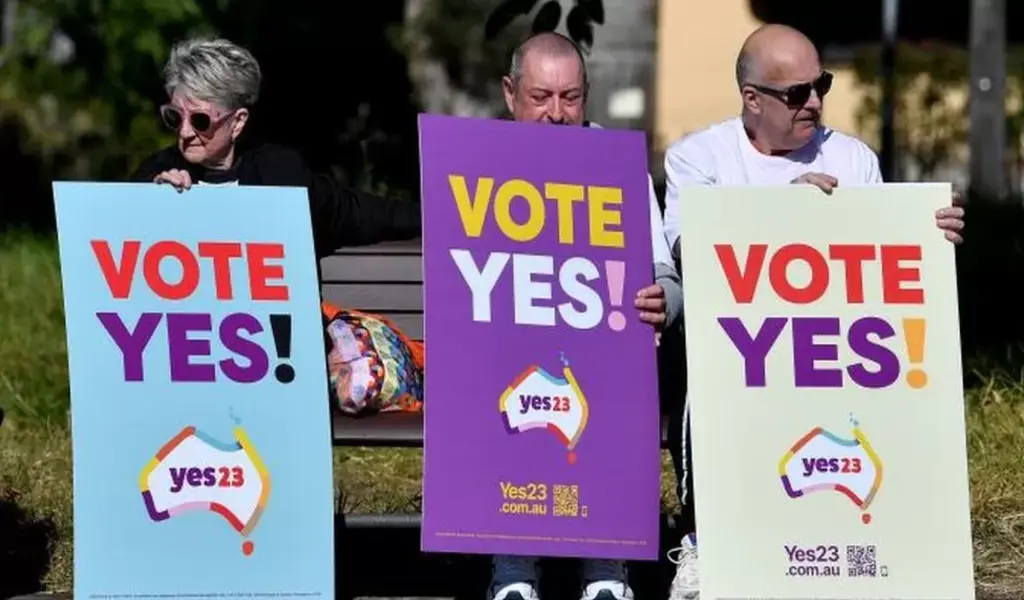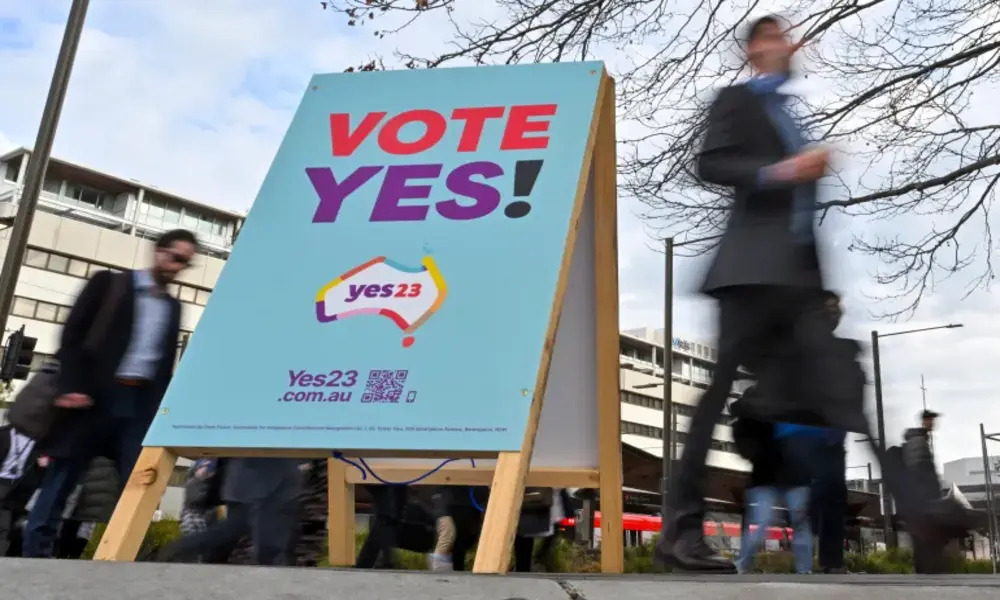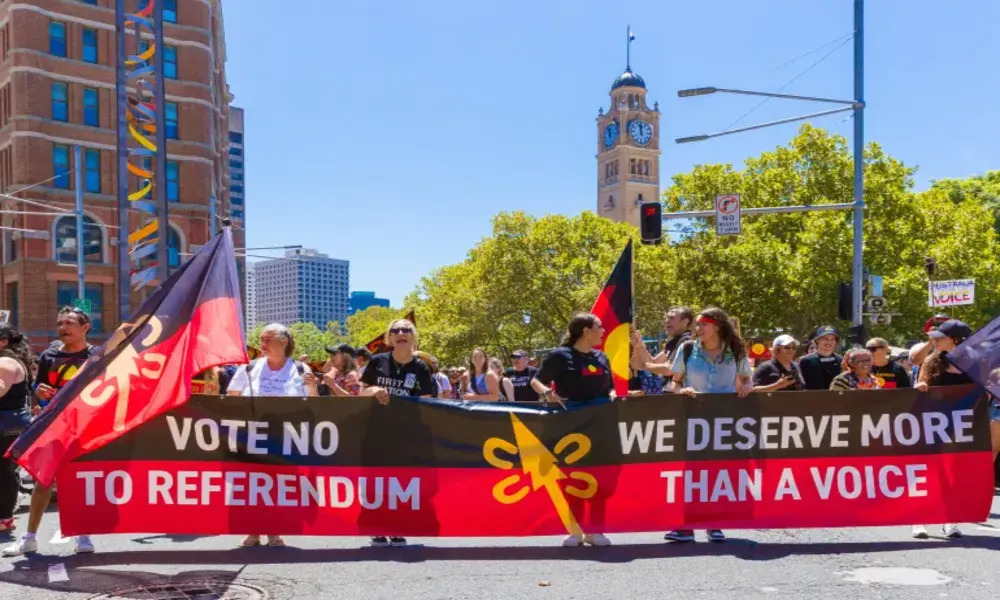News
Landmark Decision: Australians to Vote on Indigenous ‘Voice’ to Parliament in Historic Referendum

(CTN News) – On October 14, Australians are set to participate in a referendum aimed at incorporating a provision into the country’s constitution.
This provision would establish a framework for Indigenous individuals to offer guidance to the parliament regarding policies that have an impact on their lives.
Proponents argue that the integration of the ‘Voice to Parliament’ within the constitution would not only acknowledge the unique significance of Indigenous people in Australia’s history but also grant them a platform to contribute their insights to governmental decision-making processes.
Critics contend that such a move could potentially create divisions among Australians based on racial lines, all while not effectively addressing the significant inequalities that Indigenous people continue to experience.
These are some of the fundamental considerations underlying the upcoming referendum, which marks the first of its kind in a generation.
Australia’s Indigenous Heritage: Aborigines and Torres Strait Islanders
Australia’s Indigenous population encompasses both Aboriginal and Torres Strait Islander peoples, who maintain distinct cultural identities.
For over 60,000 years, Indigenous communities inhabited Australia before the British colonization in 1788.
The settlers established a colony in what they deemed an “empty” land, resulting in the dispossession of Indigenous territories, the loss of countless lives due to violence and disease, and enduring consequences.
Currently exceeding 800,000 individuals, Indigenous people constitute approximately 3.8 percent of the 2021 population, yet they remain the most marginalized segment of the society.
Tragically, Indigenous Australians experience an average life expectancy approximately eight years lower than their non-Indigenous counterparts. Additionally, they face alarmingly higher rates of suicide, domestic violence, and incarceration.
Between 1910 and the 1970s, around one-third of Indigenous children were forcibly separated from their families in an attempt to assimilate them into white culture—an era known as the ‘Stolen Generation’.
In 2008, the government issued an official apology for this period of profound suffering and injustice.
What is the ‘Voice’ Proposal?
On the day of the referendum, Australian citizens of legal age will be presented with a pivotal choice: to vote either ‘yes’ or ‘no’ in response to a single question:
“A Proposed Law: to amend the Constitution in recognition of the First Peoples of Australia through the establishment of an Aboriginal and Torres Strait Islander Voice. Do you support this proposed amendment?”
Should the answer be “yes,” the constitution would be modified to stipulate that this Voice holds the capacity to “present views” to both the Parliament and the executive government on matters concerning Aboriginal and Torres Strait Islander communities.
Advocates stress that this alteration does not grant Indigenous communities the authority to veto governmental policies; elected officials would remain empowered to disregard the perspectives presented by the Voice.
Nevertheless, critics posit that the legal scope of the Voice’s constitutional powers could be interpreted variably by the courts, potentially introducing legal ambiguity.
Proponents assert that the Voice would encompass Indigenous individuals from all eight states and territories, as well as the Torres Strait Islands, spanning remote and regional areas.
Selection of members would be carried out by local Indigenous communities, and their terms would be stipulated for a fixed duration.
The constitution would further clarify that the Parliament possesses the authority to legislate pertaining to the composition, functions, powers, and procedures of the Voice.
What’s the Origin of the Concept?
Australia began including Indigenous individuals in its census data following a constitutional amendment in 1967.
The notion of the Voice emerged in 2017 from a gathering of 250 Indigenous leaders convened at Uluru, a culturally significant sandstone monolith in central Australia.
Prompted by the government, this group was tasked with advising on how to acknowledge the Indigenous population within the constitution.
However, the conservative government of the time rejected the proposal, expressing concerns that the Voice might be perceived as an additional parliamentary chamber.
Prime Minister Anthony Albanese’s center-left Labor Party, upon winning elections the previous year, pledged to establish the Voice as a fundamental issue.
What Are the Arguments For and Against the Voice?
Albanese has made the referendum a centerpiece of his agenda, asserting that it could help ameliorate long-standing disparities faced by Indigenous communities.
Backing the referendum are the left-leaning Greens party, various independent legislators, multiple welfare organizations, as well as national religious and ethno-religious groups.
Nonetheless, opposition exists on both sides of the political spectrum.
Independent Indigenous senator Lidia Thorpe parted ways with the Greens due to reservations about the Voice proposition. She advocates for a treaty between the government and Indigenous people prior to such an alteration, akin to arrangements in New Zealand and Canada.
The conservative Liberal Party and the rural-oriented National Party remain steadfast against the idea, urging Australians to vote against it.
The Australian Electoral Commission has begun distributing informational pamphlets penned by lawmakers that present the arguments for both “yes” and “no” votes.
Moreover, the Voice could serve as an initial stride toward Indigenous claims for repatriation and compensation.
How Does Australia Amend Its Constitution?
Constitutional amendments in Australia have historically been challenging, with over 80% of referendums failing.
For a constitutional change through a referendum, a “double majority” is required—support from a majority of Australians nationwide along with approval from a majority of voters in the majority of states.
Five referendums have floundered because, while they garnered majority support among Australians, they failed to secure majorities in at least four out of the six states. Voting is obligatory.
Of the 44 referendums conducted since the constitution’s enactment in 1901, merely eight have succeeded, and none have been successful since 1977.
How Do Other Former British Colonies Approach Their Indigenous Communities?
Indigenous peoples in other former British colonies confront marginalization, though some countries have made strides in safeguarding their rights.
Canada recognizes the rights of its Indigenous population under the Constitution Act 1982.
New Zealand’s 1840 Treaty of Waitangi pledges to protect Maori culture. The country has also established Maori seats in parliament, allowing Indigenous individuals to vote for representatives in these seats or participate in general elections.
Te reo Maori, the Maori language, is recognized as an official language and is employed in educational institutions, universities, and public offices.





























